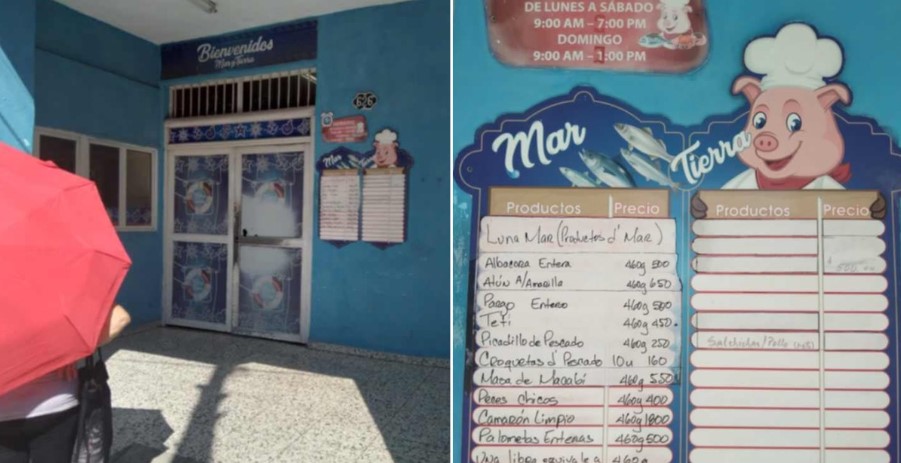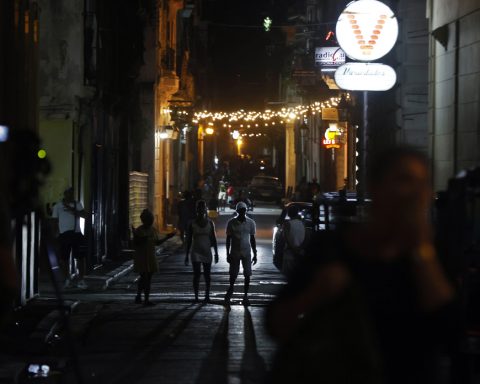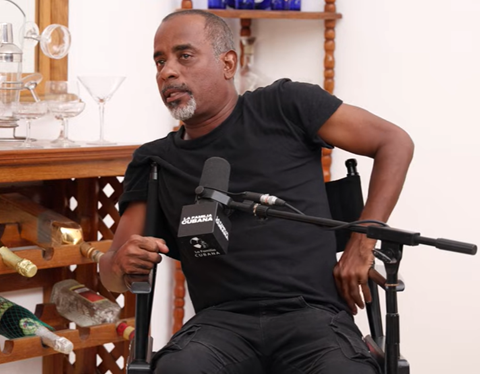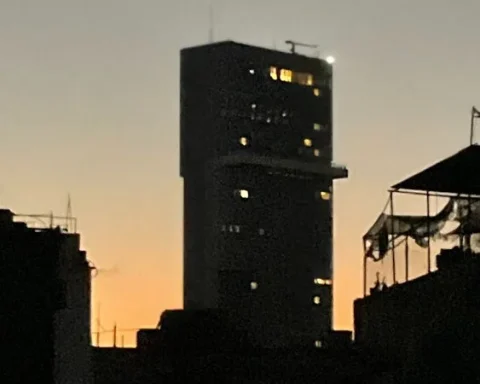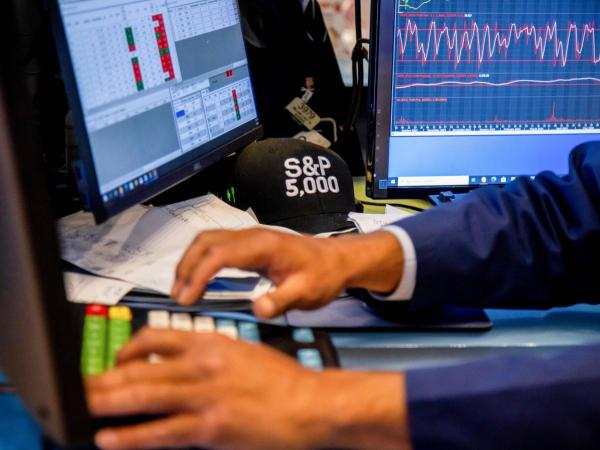HAVANA, Cuba.- Near my home, on the corner of the streets They will be And second, there is a market called Mar y Tierra that sells seafood and meat products, which had been with few offers for a long time. But in the days close to the July 26I saw with great surprise that on the board outside they were advertising fish and seafood. Only their prices were scary: snapper and albacore, 500 pesos; whole small fish, 400; guaguancho fillet, 600; cubera fillet, 650; mojarra minuta, 470; macabí minuta, 550; whole pomfret, 500; clean shrimp, 1,800; yellow tuna, 650; minced fish, 250; and fish croquettes (10 units), 160.
The cheapest offer is fish croquettes. Months ago the company Prodal used to sell packages of 10 croquettes for five pesos. Now they cost 155 pesos more, without any improvement in quality.
It is also striking that the tablet has a name: “Luna Mar”. This seems to be the commercial company that now carries the merchandise, since the sign for Mar y Tierra remains on the outside. Does the change of name of the supplier also mean a change in prices?
Those who look for Antonio Núñez Jiménez’s elementary geography text will find that this official geographer measured the dimensions of the Cuban coast and indicated that the northern coast is 1,200 km long, and the southern coast 1,300, or 2,500 square km of coastline. How is it possible that, with Cuba surrounded by sea, there is no fish and that, when there is, it is so expensive?
Before the Revolution, in the Single Market, or Four Ways Marketand in other parts of the capital fresh fish was sold very cheaply and people could buy with confidence.
Decades ago, the State acquired fishmongers in Argentina made of metal-framed panels with refrigerators included, which were quickly assembled. Located in many parts of the capital, they were very clean and well-maintained. These places, due to lack of maintenance and the disappearance of their basic merchandise, no longer exist. The few that remain today have other functions.
On the initiative of Fidel Castro, the Cuban Fishing Fleet was created in June 1962. The help of several countries led to the purchase of 114 vessels to fish in international waters, and a smaller number of vessels captured species from our island platform.
Poor management, lack of maintenance and ship breakages due to overexploitation caused the collapse of the fishing industry. Many fishermen, their health deteriorating from long, exhausting working days, gave up their work. The boats were sold as scrap to other countries.
The government blamed the collapse of the fishing industry on the disappearance of the socialist bloc and the embargo.
At the moment there are few small boats left working in the surroundings of the Island. What they catch (shrimp, lobsters, oysters, conch) in Most of it is exported.
Authorities have said that the amount of fish in Cuban waters is not enough to feed the population. They explain that the seabed is contaminated and the species are fleeing, but they do not say how to solve the problem.
Until very recently, those who fished on their own could be charged with illegal activities, and subject to fines, confiscations and even imprisonment. Now it seems that they will loosen their grip somewhat, as they will not only allow fishing in small quantities, but also the construction of small boats, and even import motors for these vessels.
In luxury hotels, state-run restaurants and paladares, they offer dishes with fish and seafood for tourists, or at very high prices in national currency, far beyond the reach of the pockets of ordinary Cubans.
OPINION ARTICLE
The opinions expressed in this article are the sole responsibility of the person issuing them and do not necessarily represent the opinion of CubaNet.
Follow our channel WhatsApp. Receive the information from CubaNet on your cell phone through Telegram.
